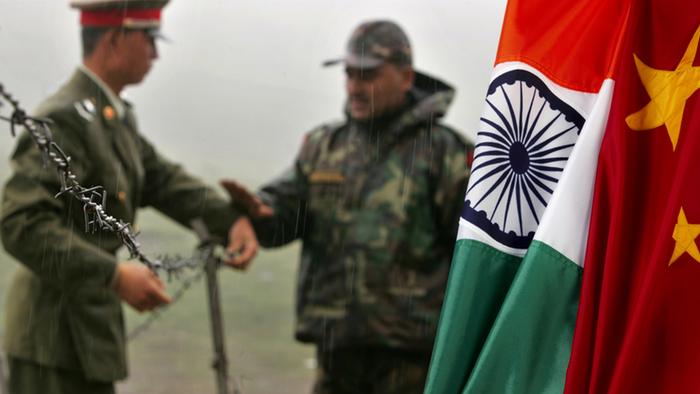
New Delhi- Indian and Chinese military commanders on Tuesday began a crucial round of negotiations to finalise a framework for a time-bound disengagement process from friction points like Pangong Tso and Depsang as well as to pull back large number of troops and weapons from rear bases along the Line of Actual Control in eastern Ladakh, government sources said.
The fourth round of Lt General-level talks began around 11:30 AM at a designated meeting point in Chushul on the Indian side of the LAC, the de-facto border between the two countries, the sources said.
The Indian delegation is led by Lt Gen Harinder Singh, the commander of the Leh-based 14 Corps, while Major General Liu Lin, commander of the South Xinjiang military region, was scheduled to lead the Chinese side.
The key focus of the high level meeting is expected to be to a roll out of the phase two of the disengagement process including in Pangong Tso and Depsang, besides withdrawal of forces and weapons from the rear bases in a time-bound manner, the sources said.
The Indian side is expected to insist on “total restoration” of status quo ante in all areas of eastern Ladakh prior to May 5 when the standoff began following a clash between the troops of the two countries in Pangong Tso, they said.
The sources said the two sides are also expected to finalise a roadmap for overall restoration of peace and tranquility in the high-altitude region that witnessed an eight-week bitter standoff between the troops of the two countries.
The talks are talking place days after the implementation of the first phase of the disengagement process from the friction points.
China’s People’s Liberation Army (PLA) has already completed pulling back troops from Gogra, Hot Springs and Galwan Valley and significantly thinned down its presence in the ridgeline of Finger Four in the Pangong Tso area in the last one week as demanded by India, according to people familiar with the developments.
In line with a mutually agreed decision, the two sides created a minimum buffer zone of three kilometres in most of the friction points where they were locked in a standoff.
The formal process of disengagement of troops began on June 6, a day after a nearly two-hour telephonic conversation between National Security Advisor Ajit Doval and Chinese Foreign Minister Wang Yi on ways to bring down tension in the area.
The two countries have already held three rounds of Lt General-level talks and the last one took place on June 30 during which both sides agreed on an “expeditious, phased and step wise” de-escalation as a “priority” to end the standoff.
The first round of the Lt General talks was held on June 6 during which both sides finalised an agreement to disengage gradually from all the standoff points beginning with Galwan Valley.
However, the situation deteriorated following the Galwan Valley clashes on June 15 as the two sides significantly bolstered their deployments in most areas along the LAC. The second round of talks took place on June 22.
The Indian and Chinese armies were locked in a bitter standoff in multiple locations in eastern Ladakh for over eight weeks since May 5.
The tension escalated manifold after the violent clashes in Galwan Valley in which 20 Indian Army personnel were killed. The Chinese side also suffered casualties but it is yet to give out the details. According to an American intelligence report, the number of casualties on the Chinese side was 35.
Following the Galwan Valley incident, the government has given the armed forces “full freedom” to give a “befitting” response to any Chinese misadventure along the LAC.
The Army has sent thousands of additional troops to forward locations along the border following the deadly clashes. The IAF has also moved air defence systems as well as a sizeable number of its frontline combat jets and attack helicopters to several key air bases.
Follow this link to join our WhatsApp group: Join Now
Be Part of Quality Journalism |
Quality journalism takes a lot of time, money and hard work to produce and despite all the hardships we still do it. Our reporters and editors are working overtime in Kashmir and beyond to cover what you care about, break big stories, and expose injustices that can change lives. Today more people are reading Kashmir Observer than ever, but only a handful are paying while advertising revenues are falling fast. |
| ACT NOW |
| MONTHLY | Rs 100 | |
| YEARLY | Rs 1000 | |
| LIFETIME | Rs 10000 | |













